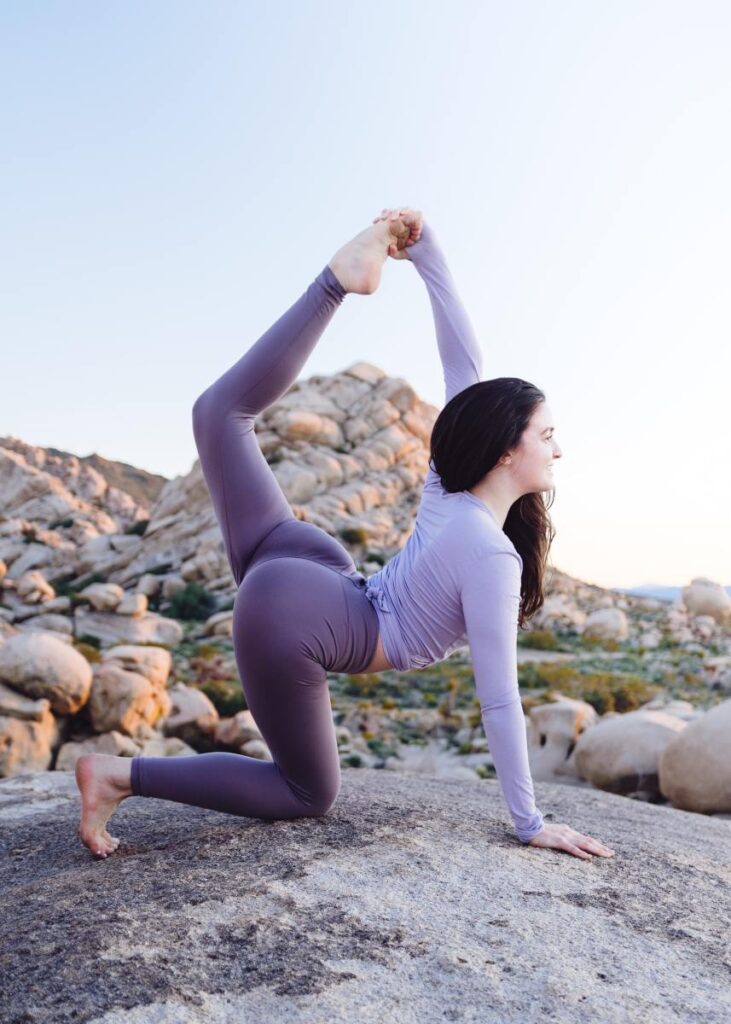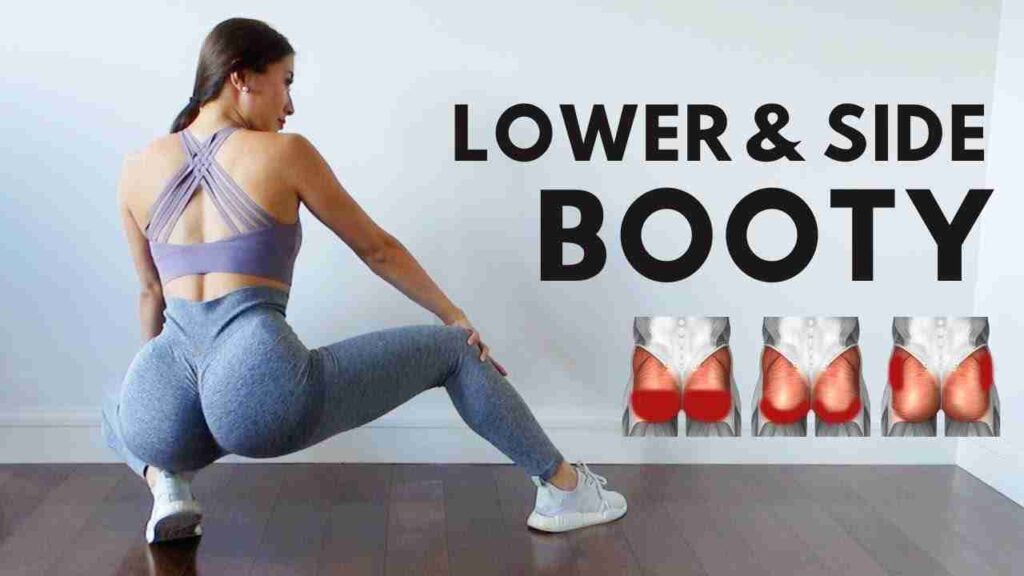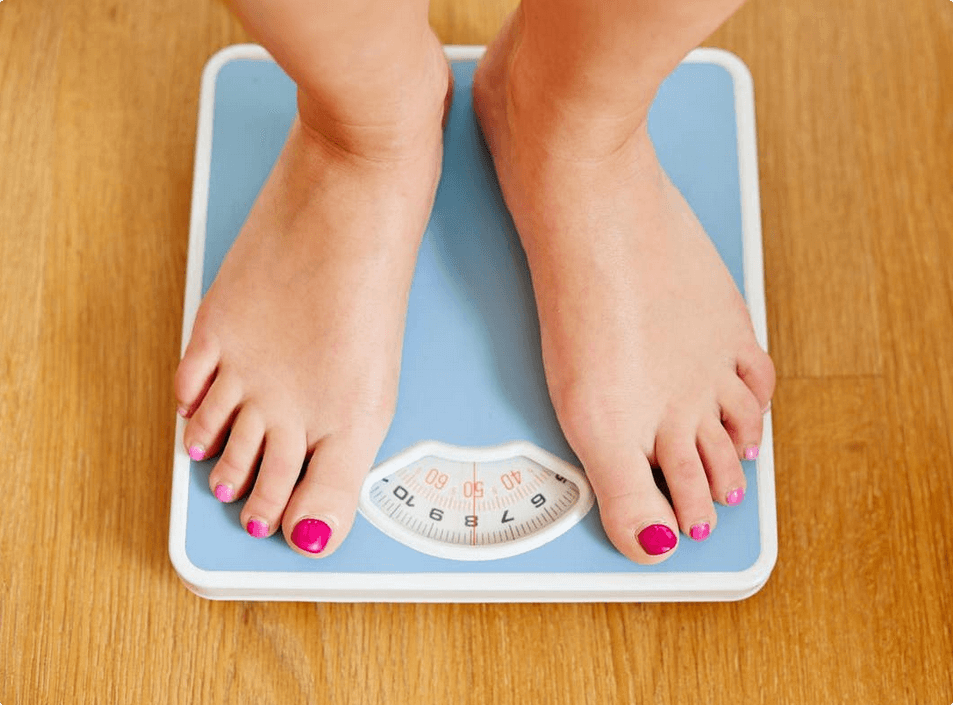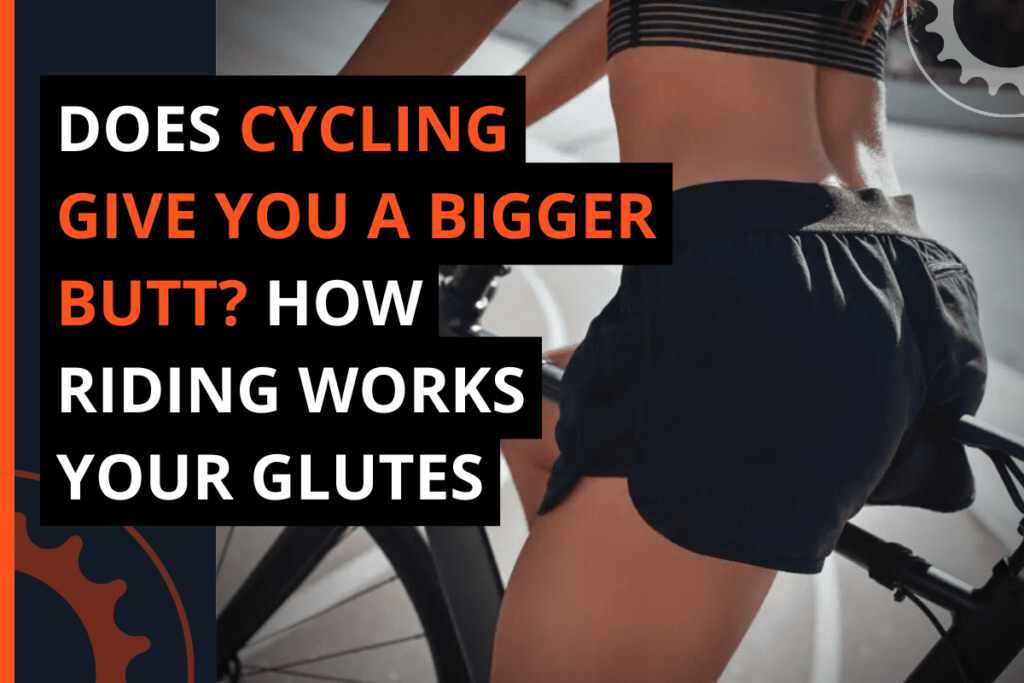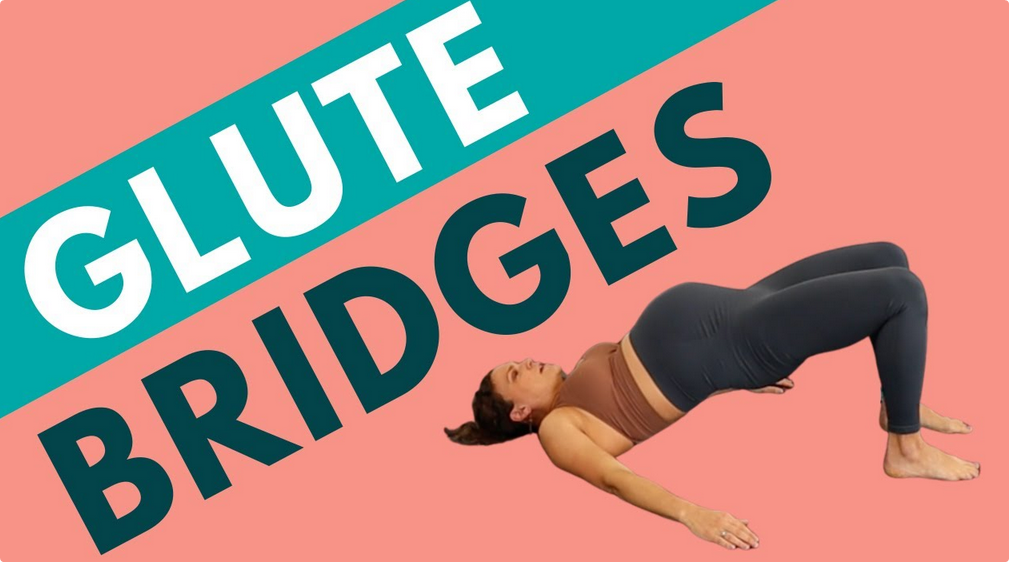Signs your glutes are growing can be hard to come by. It can be frustrating to put in hours at the gym and not see any progress.
The good news is that there are some clear signs that your glutes are growing and getting stronger.
What are Signs Your Glutes Are Growing?
Whether you’re doing squats, lunges, or other glute-focused exercises, these indicators will help you track your progress and stay motivated.
From increased muscle definition to improved performance in other exercises, there are many ways to tell if your butt workouts are actually working.
In this article, we’ll explore the top signs that your glutes are growing, so you can confidently continue your training and achieve your desired results.
So, if you’re ready to see the fruits of your labor and build a stronger, shapelier butt, keep reading!
Visible Changes in Glute Size and Shape
One of the most obvious signs that your glutes are growing is a visible change in size and shape. Here are three things to look for when assessing your glute growth:
1. Noticeable increase in glute size
If you’ve been training regularly, you should start to notice a slight increase in the size of your butt as well as more definition and shape.
This is because your body is building up muscle fibers within the gluteal muscles to help them become stronger and larger over time.
As such, it’s important to use progressive overload and heavier weights in your glute workouts if you want to see results.
2. More defined glute muscles
Another way to tell if your glutes are growing is by their more defined appearance.
As your butt muscles are getting stronger, their shape and definition will become more visible.
If you’re doing the right exercises with proper form, you should start to see a clear separation between the top, middle, and bottom of your glutes.
In addition, the increased muscle mass in your glutes should make them look more toned and defined.
3. Improved hip mobility
Finally, improved hip mobility is another sign that your glutes are growing.
Stronger glutes mean better hip stability, which can lead to greater flexibility and range of motion in the hips.
As a result, you may find it easier to perform everyday activities such as walking, running, and jumping without pain or discomfort.
So if your hip mobility is improving, it’s a surefire sign that your glutes are getting stronger.
Here’s how to test your hip mobility:
Let’s now address a very common question, and then we will continue with the next section.
Will I see visible signs of glute growth after a few weeks?
It usually takes several months for your glutes to grow in size and shape. This is because muscle growth takes time, and the process can be slow and steady.
You can notice a “glute pump” after each session, and this is an indicator that your glutes are being worked, however, it takes more time than just a few weeks to see real, visible progress.
You see, building a strong, shapely butt requires dedication and consistency.
You must stay committed to your routine in order to see results. This means eating right, lifting heavy weights, and doing bodyweight exercises that target the glutes.
It’s also important to focus on engaging the posterior chain (glutes, hamstrings, and lower back) during each workout for optimal results.
Now, let’s go ahead and see other signs that your glutes are growing.
Increased Strength and Endurance
Increased strength and endurance are two more indicators of glute growth.
When you’re doing glute activation exercises such as hip thrusts, squats, and lunges, you should start to notice a gradual increase in the amount of weight or resistance that your body can handle.
This is because stronger glutes can support heavier loads and allow for more reps with ease.
Which leads to the next sign…
4. Ability to lift heavier weights during glute exercises
Great news for those of us who are trying to build stronger glutes: you should start to notice an increase in your ability to lift heavier weights during glute exercises.
As your glutes become stronger, they’ll be able to better support heavy loads and allow you to lift more weight than you did before with ease.
With consistent training and progressive overload, you can gradually increase the amount of weight you lift during glute-focused exercises. As your strength increases, so does the size of your glutes.
5. Increased number of reps or sets in glute exercises
It’s also likely that you’ll notice an increase in the number of reps or sets you can do in glute-focused exercises.
As your glutes become stronger, they can better support the weight and allow you to do more repetitions and sets without getting fatigued as quickly.
What’s more, as your glutes gain size and strength, you may be able to do more advanced exercises such as hip abductions and Romanian deadlifts.
6. Improved performance in other exercises
Having strong glutes can also improve your performance in other exercises.
For instance, stronger glutes can help you do squats and deadlifts with more ease because they generate more power from the posterior chain (glutes, hamstrings, and lower back). This can lead to stronger lifts and better results in other areas of your fitness routine.
Also, if you ride a bike or run, your glutes will help you go faster and longer.
Now, let’s talk about looks.
Changes in Clothing Fit
Do you remember how tight your jeans were before you started your glute-focused workout routine?
If you’ve been working hard and consistently, then you should start to notice a difference in the fit of your clothes. That’s because when your glutes gain size, they’ll make your pants, shorts, etc. feel less baggy and more fitted.
7. A tighter fit in pants or shorts around the glutes
As mentioned, when your glutes start to grow, you’ll notice that your pants and shorts fit differently around the glutes.
Your clothes will become tighter and more form-fitting, which can be a great sign of progress if you’re trying to build a booty.
You see, when glute muscle growth starts to happen, your glutes will become bigger and rounder, which means that your clothes won’t fit comfortably in the same way as before.
And for most women, that’s the problem they aspire to have.
8. Needing to size up in pants or shorts due to glute growth
If you’ve been training your glutes for a while and notice that your clothes are becoming increasingly tighter around the glutes, then it’s time to size up.
This is because when your glutes get bigger, they’ll need more room in order to fit comfortably. So if you’re starting to feel restricted or uncomfortable when wearing pants or shorts, then it’s time to start looking for larger sizes.
If you can do your daily activities without feeling restricted, then you know your glutes are growing.
9. The dress size has changed
If you’re noticing that your dress size has changed, then congratulations! Your glutes are growing.
When you gain muscle mass in the glutes, your body shape will change, and many women find that their dress sizes become smaller as their glutes get bigger and rounder.
Not only is this a great sign of progress, but it’s also highly rewarding to see your efforts pay off in such a tangible way.
Finally, we’ll go over the most undervalued sign of glute muscle growth — improved posture.
Improved Posture and Balance
When you walk upright, feeling strong and confident, it’s a great sign that your glutes are getting stronger and bigger.
10. More upright posture due to stronger glutes
Weak glutes can lead to postural issues such as a slouch, which is why having strong glutes is essential for good posture.
When your glutes are getting bigger and stronger, you’ll be able to stand more upright because they will be better supporting your upper body.
Building muscle tissue in your glutes will improve your balance, so you’ll be able to stay upright without having to hold yourself up.
11. Improved balance due to stronger glutes
Stronger glutes can help you maintain a better balance when standing or walking.
This is because they provide a stable base of support, allowing you to adjust your stance without having to rely on external objects such as walls or furniture.
In addition to improved posture, stronger glutes can also improve your overall performance in physical activities such as running and jumping.
If you ever do any unilateral exercises, such as single-leg squats or hip abduction exercises, you’ll be able to do them with greater control and stability.
12. Reduction in lower back pain due to stronger glutes supporting the spine
Because gluteus muscles help support the spine, stronger glutes can reduce lower back pain.
When your glutes are weak, they’re unable to provide adequate support for your spine, leaving it vulnerable to injuries and muscle imbalances.
There’s no coincidence that the largest muscle in your body is also the one that can provide the most support for your spine when it’s strong.
13. Enhanced ability to activate your gluteal muscles during body exercises
Your mind-body connection is enhanced when your glutes are strong, allowing you to better recruit them during exercises.
When you can activate your glutes more efficiently and effectively, you’ll be able to get the most out of your workouts.
Plus, it’s easier to do exercises such as hip extension or hip flexion movements with greater range and control.
Glute activation is essential for building a strong posterior chain and achieving your fitness goals, so if you can do it more efficiently, then you know your glutes are growing.
These are the top 13 surefire signs your glutes are growing. If you’re noticing any of these signs, then you can be sure that your hard work is paying off and that you’re on the right track to having a strong booty!
Frequently Asked Questions
After going through the above information, you may still have some questions about the signs of glute growth. In this section, we will answer some of the most frequently asked questions on this topic.
Are my glutes growing if they are not sore?
It’s a common misconception that soreness is a sign of muscle growth, but in reality, it isn’t. It’s completely normal for your glutes to not be sore after a workout.
In fact, some people never experience any soreness at all when lifting weights. So don’t worry if you’re doing the proper exercises and following a good diet but not feeling any soreness — it doesn’t mean your glutes aren’t growing.
How long does it take to see signs of glute growth?
It depends on many factors, such as how consistently you’re training and how well you’re recovering between sessions.
Generally speaking, though, you should start seeing some visible signs of progress within 8-12 weeks of regular training. However, it can take longer for some people to start seeing measurable results.
Do glutes grow on rest days?
Absolutely! Rest days are an important part of any workout routine, as they give your muscles the time they need to repair and grow.
When you rest, your body has the opportunity to restore itself and build up its strength. This helps your muscles become bigger and stronger over time. So don’t skip out on those rest days.
Can you feel your glute muscles growing?
As your glutes become stronger, you will begin to notice a difference in the way they feel.
You may start to experience more stability and control during unilateral exercises, such as single-leg squats or hip abduction exercises.
Plus, when you do activities like running or jumping, you’ll be able to do them with greater ease and power.
Finally, you may also start to feel your glutes become larger as your muscle fibers expand.
What is the best way to measure glute growth?
Measuring glute growth can be tricky since there isn’t a single metric to track your progress. However, there are several ways to measure the strength and size of your glutes if you’re trying to see how far you’ve come.
Take progress photos every few weeks to assess changes in your body composition and see if your glutes are getting bigger.
You can use measuring tape to track changes in your hip and thigh circumference as well. Just make sure that when you are taking photos and using measuring tape, you are doing both at the same time under the same environmental conditions.
You don’t want to take one photo after you have a glute pump and then, a few months later, another one after you haven’t done any glute specific workouts. That won’t give you accurate readings.
Ideally, you would track progress as soon as you woke up. This will give you more accurate results.
Finally, you can measure your one-rep max on key lifts (such as the deadlift) to assess your glute strength over time.
How often should I be working out my glutes to see the first signs of growth?
If you want to see the first signs of glute growth, it’s important to work out your glutes consistently. But this doesn’t mean you should be hitting the gym every day!
In fact, training too often can increase the risk of injury, burnout, and fatigue.
For most people, it’s best to focus on working their glutes two or three times a week.
This provides the muscle with ample time to rest and recover between sessions, allowing it to grow bigger and stronger over time.
To maximize your glute gains, you should also make sure you’re following a proper diet and getting enough rest.
Eating a caloric surplus (consuming more calories than you burn) can help your body build muscle, while getting enough sleep (at least 7-8 hours per night) can help your body recover faster and more efficiently.
Finally, it’s important to focus on quality movement patterns when training your glutes. That means doing exercises like squats, deadlifts, and hip thrusts with the right form, so you can target the glutes effectively and reduce the risk of injury.
Conclusion
Strong glutes not only look great, but they also play an important role in overall body strength and stability.
If you’re wondering whether your glutes are growing, there are several signs to look out for, including increased strength, better posture, and a more defined shape.
To promote glute growth, focus on exercises that target this muscle group, such as squats, lunges, and hip thrusts.
Aim to train your glutes 2-3 times per week, and be patient – it can take several weeks or months to see significant growth. Remember, everyone’s body is different, so don’t compare yourself to others and focus on your own progress.
With consistent effort and dedication, you can achieve strong, toned glutes!

